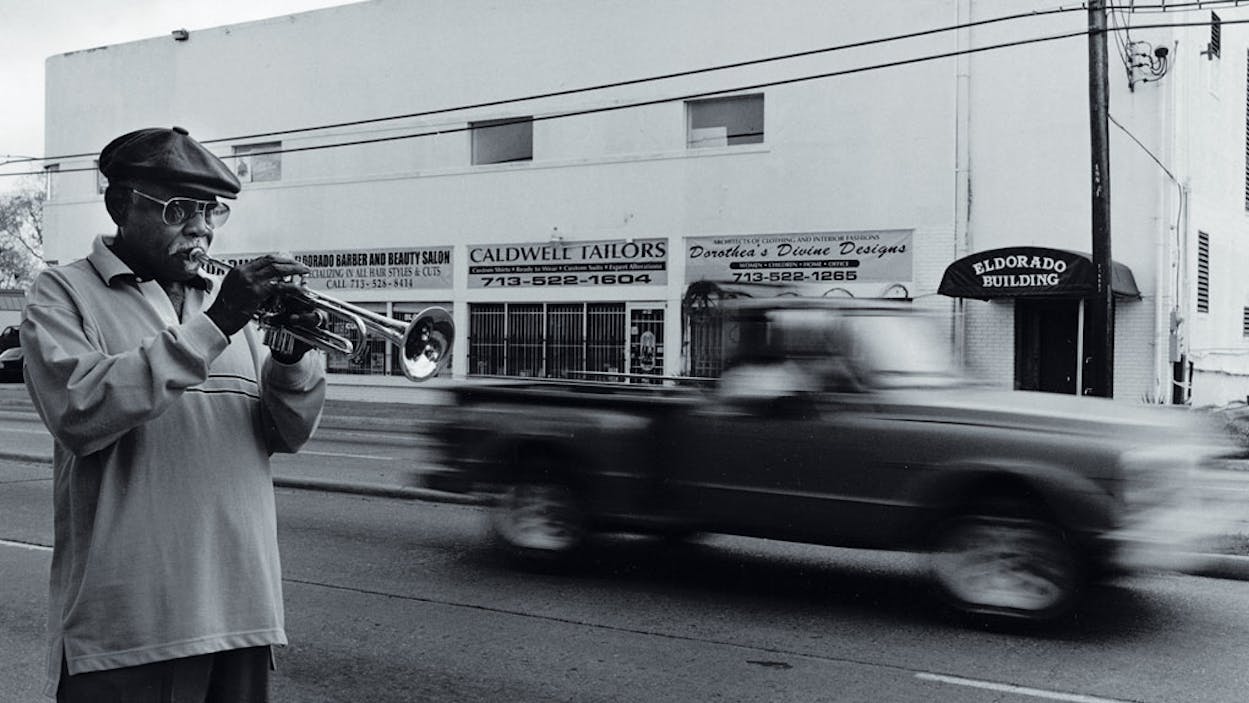Austin gets the credit for being the state’s music capital, but no city in Texas has a more notable musical history than Houston. It’s the place where Beyoncé learned to sing, where both George Jones and Willie Nelson made their first hit records, where Duke/Peacock became one of the first great R&B labels, where sixties psychedelia found a home and Townes Van Zandt found his voice, where ZZ Top transformed modern rock and DJ Screw revolutionized hip-hop. Partly because of size, partly because of geography (near the cotton fields of East Texas, the plains of South Texas, and the swamps of Louisiana), partly because of its wildcatting spirit (which drew various crazed music-man entrepreneurs), Houston became home to all manner of artists, from soul shouters and Cajun singers to blues guitarists and folk pickers. There’s no better way to experience this wash of sound than with a tour of musical monuments, some of which are still blasting out the beats that make Houston so special.
The Eldorado Ballroom
2310 Elgin, 713-526-7662
Walk beneath the canopy, up the stairs, and into what was Houston’s high-class R&B and blues venue in the post–World War II years. When B. B. King, Ray Charles, T-Bone Walker, or Etta James wasn’t at the mike, the club hosted local talent shows, where Johnny “Guitar” Watson got his start. Now owned by Project Row Houses, a Third Ward cultural nonprofit, the Ballroom is mostly a rental facility, though it also puts on the Live at the Eldorado series, an opportunity to relive the heyday all over again.
Lightnin’ Hopkins Memorial
Corner of Dowling and Francis
In the forties and fifties, the rakish Hopkins played his guitar and sang his songs all along Dowling Street, the main thoroughfare of black Houston. This was his favorite corner, just two blocks from the Eldorado and, now, a smoothie’s throw from the hipster vegetarian fare at Doshi House.
Sugarhill Recording Studios
5626 Brock, 713-926-4431
One of the oldest studios in the country, SugarHill has intimate rooms where everyone from George Jones to Freddy Fender to weird folk icon Jandek to a young R&B group called Destiny’s Child have recorded. The crypt-like echo chamber makes sounds that can’t be duplicated by digital equipment. (Visits by appointment.)
Neon Boots
11410 Hempstead Hwy, 713-677-0828
Hempstead Highway still has the lonely feel it did in 1959, when a young songwriter named Willie Nelson drove in from Pasadena to his regular gig at the Esquire Ballroom. On one of these commutes he wrote “Night Life,” the greatest song about what happens “when the evening sun goes down.” The Esquire still stands, reinvented as Neon Boots, a lively, gay-friendly honky-tonk where you can dance on the original wood floor to bands playing the stage that once hosted Willie and Patsy Cline. Come early, dance long, and stay late.
Love Street Light Circus Feel Good Machine
1019 Commerce
During the late sixties, Love Street was the grooviest club in Houston. Here in the historic Sunset Coffee building downtown, psychedelic rock bands like the 13th Floor Elevators played for hippies reclining on cushions in the “zonk-out” area. The club closed in 1970, and after sitting empty for years, the building is now being renovated as part of the Allen’s Landing redevelopment. Soon you’ll be able to rent a bike, sip a coffee, and recline on the grass in your own zonk-out area.
Playlist
“Night Life” – Willie Nelson
“T-Model Blues” – Lightnin’ Hopkins
“Treat Her Right” – Roy Head and the Traits
“Bootylicious” – Destiny’s Child
“Fire Engine” – 13th Floor Elevators
“Jole Blon” – Harry Choates
“T-Bone Shuffle” – T-Bone Walker
“Houston, the Action Town” – Juke Boy Bonner
“White Freightliner Blues” – Townes Van Zandt
“Why Baby Why” – George Jones
- More About:
- Music









